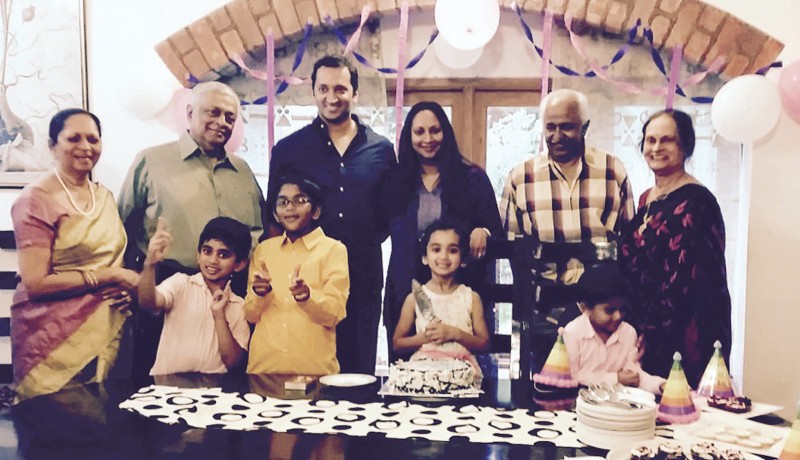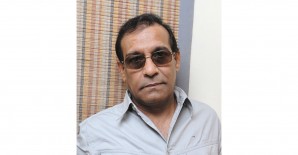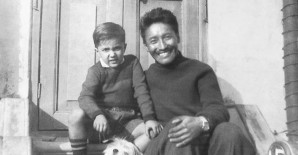
Columns

International columnist Jack York writes about the incredible work of India-born technology thought leader Sanjeev Shetty
The hunt continues! Harmony has put me on the prowl to find interesting people of Indian descent that are making a difference in senior living in the US. To my surprise, it’s remarkably easy—since I have started asking the questions, I just keep finding more and more people who are making a difference. This month is no different; in the course of some business discussions around iN2L, I met a technology thought leader with a connection to India. Meet Sanjeev Shetty, a technology visionary living in Northern Virginia, close to the US capital of Washington DC. This story has an interesting diversion to Africa in between India and the US. Read on and you will learn about another fascinating individual from your homeland.
Sanjeev spent his first 10 years in India; he attended elementary school in New Delhi (Shiv Niketan) and Mumbai (Hill Grange and St Mary’s). At the age of 10, he left India owing to a shift in his father’s career and moved to Dar-es-Salaam, Tanzania. After a brief stint at the Indian Expatriate Study group, he enrolled in the International School of Tanzania (from grade 6 onwards), culminating in his high school diploma (‘O’ level) and pre-university classes, completing his International Baccalaureate (IB).
His educational aspirations further took him from East Africa to the US, in Wisconsin, where he studied mathematics and computer science. This was a ripe time in US history for technology as the boom was just starting. His deep passion for computers and technology started to spark his curiosity and drive. He spent a few years in corporate America, working for Time Warner Cable. He continued his education, and got his MBA majoring in competitive strategy and e-commerce at the University of Rochester, New York. Since then, he has settled in Virginia.
Sanjeev was comfortably living the technology dream, but like so many others involved in the field of ageing, personal experiences changed his perspective—and his life. “With ageing parents, I have always dealt with issues related to ageing, such as housing and medical needs, but I never thought that someday I would end up working in this space,” he explains. “Apart from my parents, I have witnessed this universal issue all around me and have always been fascinated by ageism. It is a phenomenon we all have to deal with at some point in our lives. It is fascinating to study US census numbers and see how rapidly the population of seniors 65 and over will grow over the next decade. One in five individuals will be a senior over 65 by the year 2030. In fact, the demographic of people 50+ will be about the same size as the millennials. If you weren’t thinking about this group of individuals, it’s only a matter of time before their needs and preferences will be front and centre.”
His journey into senior living was driven by a desire to have more purpose. After spending over two decades in corporate life, he felt personally unfulfilled. The work he was doing was not purposeful and had left a void in his sense of achievement. In 2017, he started SDS Ventures in an effort to start transformational work. He advised start-ups aimed at transforming healthcare with the use of artificial intelligence. That work got him involved with a progressive organisation called The Asbury Group; he was asked to come in, in a consultative role, to introduce an ‘Innovation and Incubator’ programme to help Asbury become differentiated and transform into a person-centred organisation.
What’s fascinating from my outside perspective of Sanjeev (like others I have written about) is how his roots from India have transformed his perspective and passion. “I feel experiences and culture have a strong influence on my work,” he agrees. “My experiences with the ‘boomer’ and ‘forgotten’ generation, along with a strong sense of Indian culture in my life, have moulded my beliefs and the work I do. Indian culture is inherently focused on family values and ageing in place, with most parents moving in with their children or having children as their caretakers.”
Sanjeev still has extended family in India and visits them often. Both his parents and his wife’s parents live in Bengaluru, Karnataka. His ties in India have an influence on his work—he hopes to leverage the growing technology and biotechnology intellectual capital in India to try to solve some of the issues facing the senior living community. There is a vast amount of research that can benefit common diseases and problems plaguing seniors in the US, such as dementia, diabetes and congestive heart failure. And he sees, both in the US and India, a huge role for technology in senior living—telemedicine, smart home technology, fall prevention, resident safety and robotics are all examples of technologies that will transform ageing.
Sanjeev sees the pros and cons of both the Indian and US cultures. “The US has given me opportunities beyond my imagination and something I would have never gotten in any other country,” he shares. “American culture and education challenge you and make you confident in your abilities. They also enable ambitious and entrepreneurial individuals to succeed, if you have the right combination of talent, drive and will. We feel blessed for having the best of what America has to offer in a wonderful part of the country, with my wife focusing on the children. On the flipside, living in the US can also lead to a sense of social isolation. I don’t feel it as much because even though we are 12,000 miles from my family, I am constantly communicating with and visiting them. Family is not always on top of everyone’s value list. American families tend to be nuclear, with parents rarely living close, much less with their children. This type of nuclear living can lead to some amount of social isolation.”
In his view, India is a vast treasure trove of ‘goodies’. “As an avid foodie, I can’t help but start with the food in India, which is varied, delicious and addictive,” he says. “When I visit India, which is almost every year, I still crave my mom’s home-cooked food or even dare to eat street food. India has a vast and diverse culture. Indian art, history, culture and love for the movies are all very fascinating to me and woven into the culture. I have been fortunate to have been associated with some of the pillars of Indian cinema through extended family. One of the principal strengths of Indian culture is its emphasis on family and community. Today, India’s youth is a demographic to reckon with; their mark is everywhere in Indian culture, whether it’s movies, technology or the workplace. They are India’s strongest economic potential, 400-million strong—better educated, better connected to information and the world. They are reshaping the country’s mobile economic revolution and reshaping the way India performs commerce. Today, India is also a hotbed for start-ups; the country has more than 19,000 technology-enabled startups, led by consumer internet and financial services.”
Interestingly, Sanjeev’s time in Africa also moulded him in many ways, and gave him a strong sense of volunteerism and giving back. He has volunteered for Mother Teresa’s orphanage, built bridges and nursing centres in remote leprosy-afflicted villages, participated in the Model United Nations and the Duke of Edinburgh’s programme and even climbed Mt Kilimanjaro! His experiences, he avers, will stay with him forever. The poverty and humanitarian need in these countries taught him to never take anything for granted and appreciate all one has.
So once again, another remarkable person found simply in the vendor hall at a senior living conference. I didn’t know this man a week ago. A person I may have had a 10-minute technology conversation with turns out to be a man of action, seamlessly bridging three cultures at once on three different continents. It’s remarkable to see a mix of technological prowess with human compassion, the ideal mix that can change the world. Stay tuned and watch where Mr Sanjeev Shetty winds up—he may be designing a compassionate robot this afternoon that keeps your mother connected to her health records and Bollywood hits at the same time!
York is co-founder of It’s Never 2 Late ® (iN2L), an American company dedicated to helping older adults realise the full benefits of today’s technology
Photo courtesy: Jack York Featured in Harmony — Celebrate Age Magazine July 2018
you may also like to read
-
Mental workout
Mukul Sharma tells you how to keep those grey cells ticking Everyone will ultimately lose his or her brain….
-
Helpline
Dr Harshbir Rana answers your queries on personal and social issues related to ageing, elder care and intergenerational relationships ….
-
Off the cuff
Raju Mukherji pays tribute to his first hero, Tenzing Norgay, an exemplary mountaineer Darjeeling, 1955. Dr ‘Pahari’ Guha Mazumdar….
-
Yoga RX
Shameem Akthar shows ways to control debilitating ankle pain through regular practice Ankle pain is so common and prevalent….







